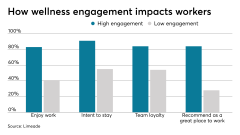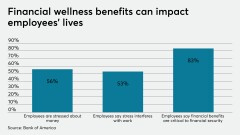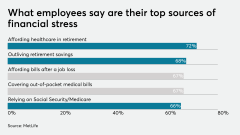The outbreak of the COVID-19 pandemic sent employers across the country scrambling to put a work from home plan into place and keep employees safe. Yet as the virus raged on, it became clear to employers that their employees were going to need more support than ever before.
Employer-provided help with childcare, physical wellness and mental health are some critical areas where employees needed greater support this year. More than a quarter of employers have boosted employee health benefits since the COVID-19 pandemic began, according to research from Fidelity Investments.
“Childcare enhancements, home office stipends, reimbursements, telemedicine and flexibility — these were some of the top benefits we saw take center stage in 2020,” says Bhushan Sethi, global people leader at PwC. “As we approach a post-shutdown world, we can expect these to carry over. But, it’s also an opportune time for employers to take a fresh look at their rewards and benefits based on employee preference.”
The uncertainty of 2020 has made planning for 2021 a more difficult task than employers anticipated. There have been concerns about rising costs of healthcare, increased burnout among employees and a spike in the virus causing businesses to shut down, resulting in layoffs.
“If the COVID-19 pandemic has taught us anything, it’s that we have to be ready for the unpredictable,” says Andrew Frend, senior vice president of product and strategy for Voya Employee Benefits. “As we think about the benefits landscape for [2021], a major focus will need to remain on education and communication.”
Read more:
Voya research shows that 77% of employees want their employer to provide more information outside of open enrollment to help them better understand all their employee benefit options. Seventy-five percent of workers said access to employee benefits was more important in 2020 than ever before.
“Employers understand they cannot stick with the benefits package and enrollment process that existed pre-pandemic,” says Leston Welsh, head of business segments at Prudential. “They are evaluating benefits to ensure they address workers’ holistic needs, changing enrollment processes to accommodate remote workers, and strengthening benefits communications to be more personalized for employees depending on their life stages.”
Throughout 2020, many employers updated their benefits amid the COVID-19 outbreak. Some of the benefits were changed as a direct result of the crisis, while others were simply changed during the pandemic. The following list is your guide to learn more about 35 employers that made adjustments for 2020 and beyond.









































